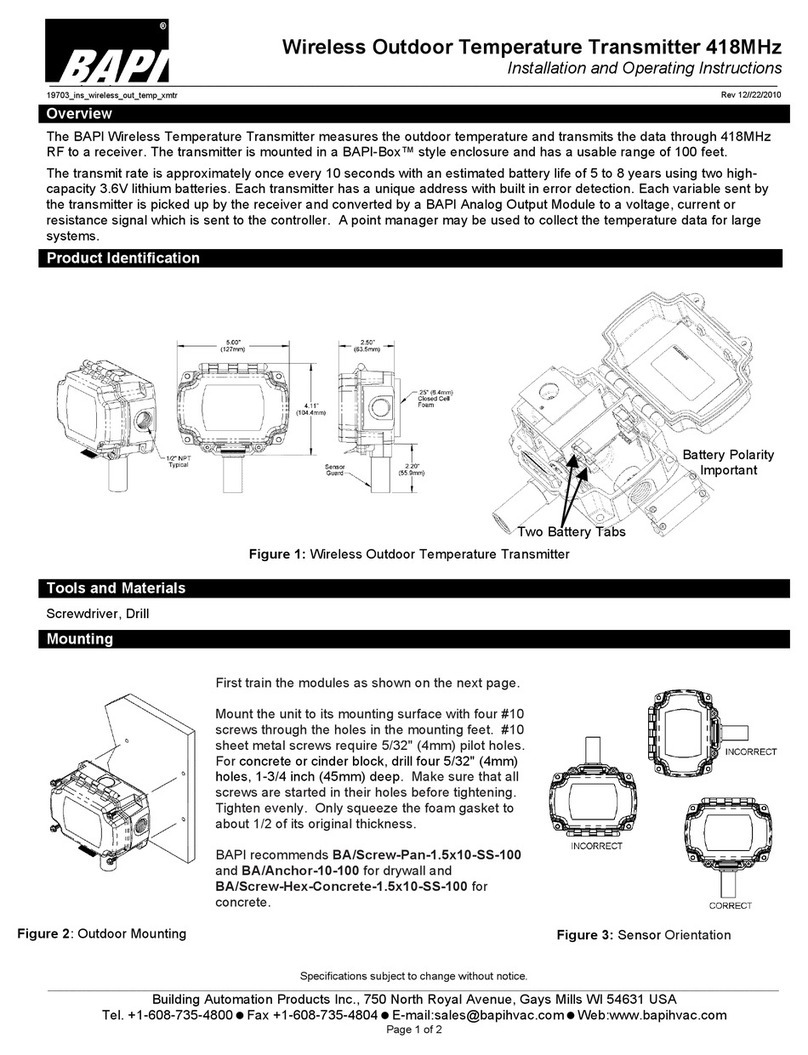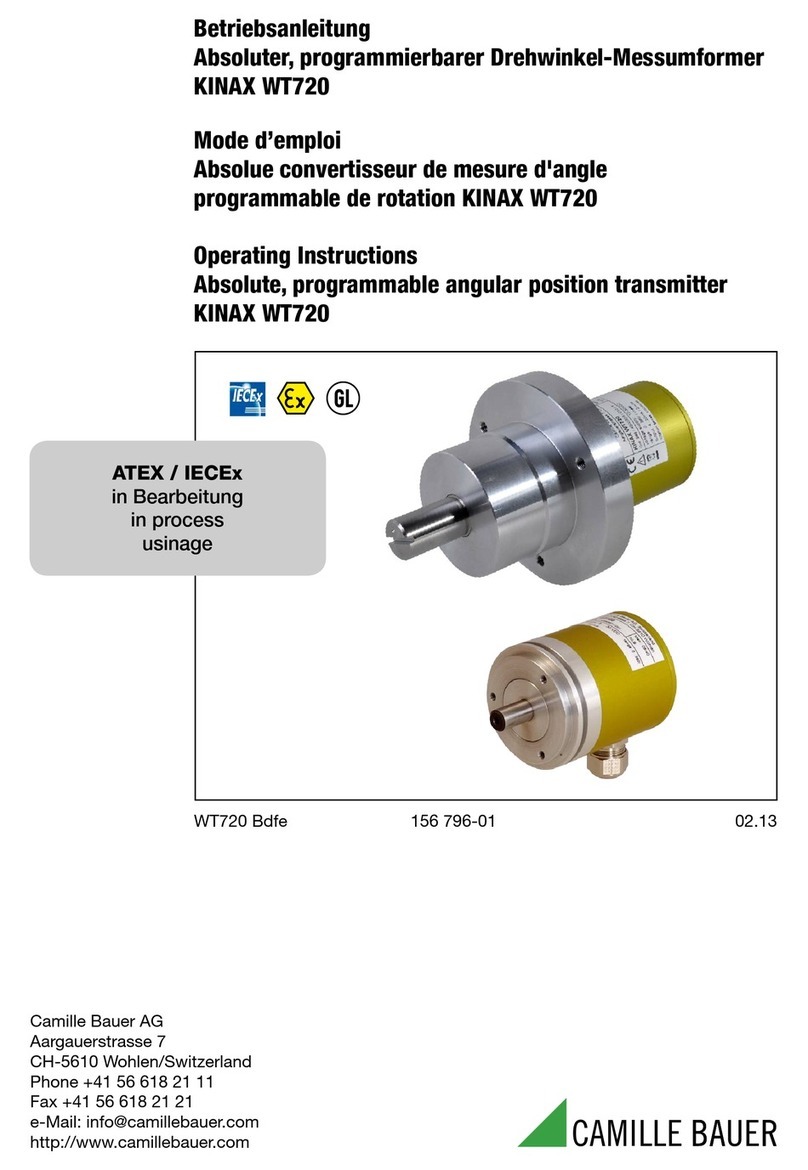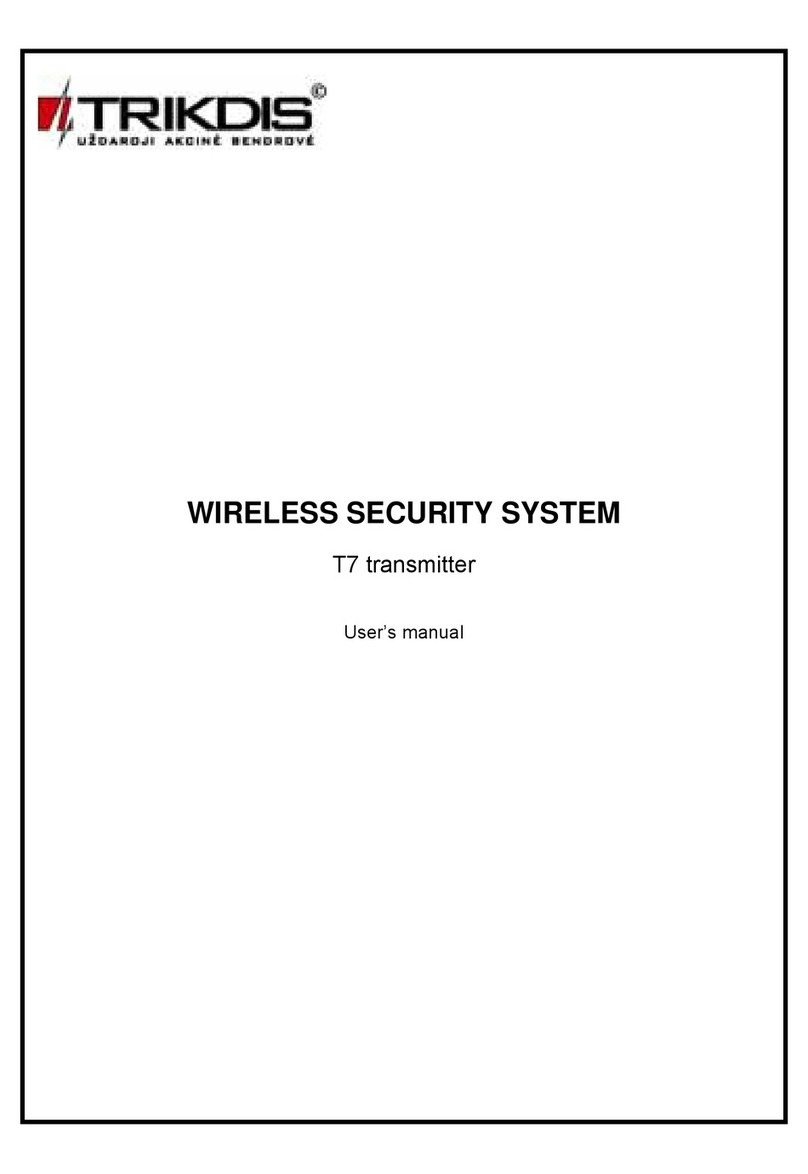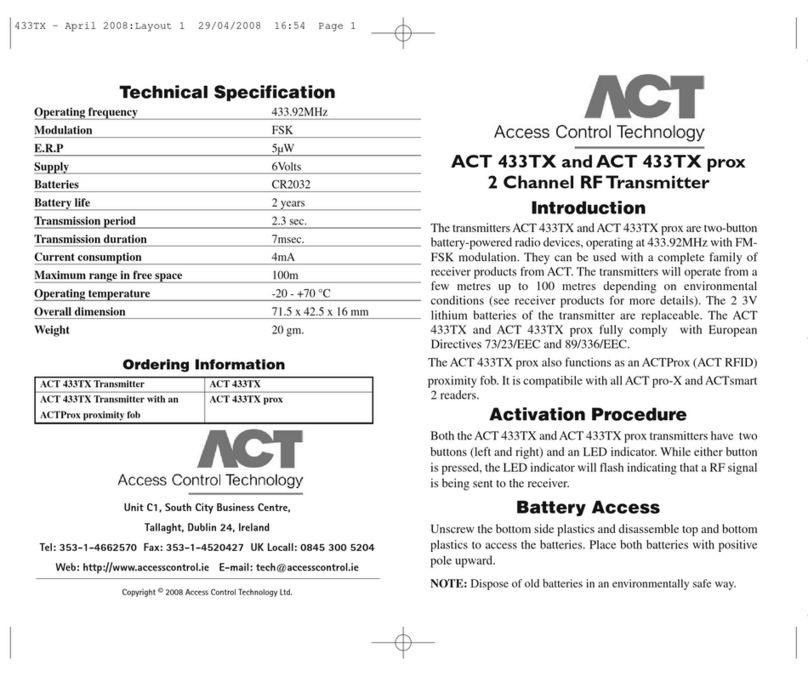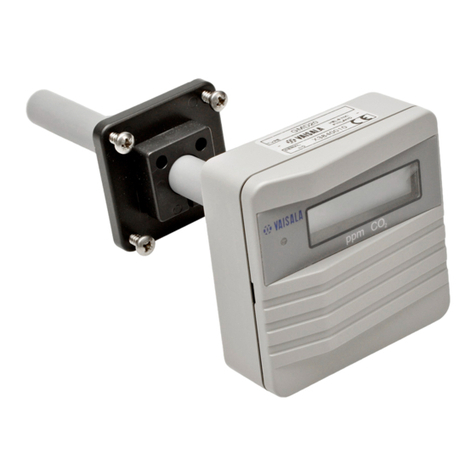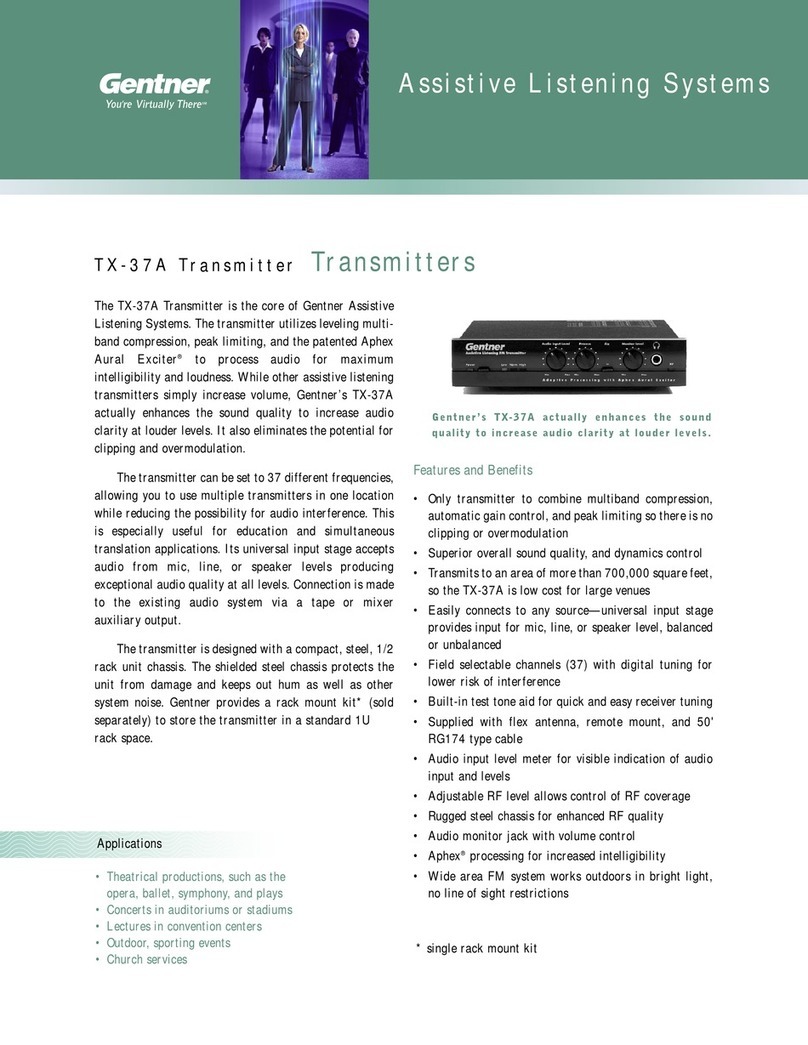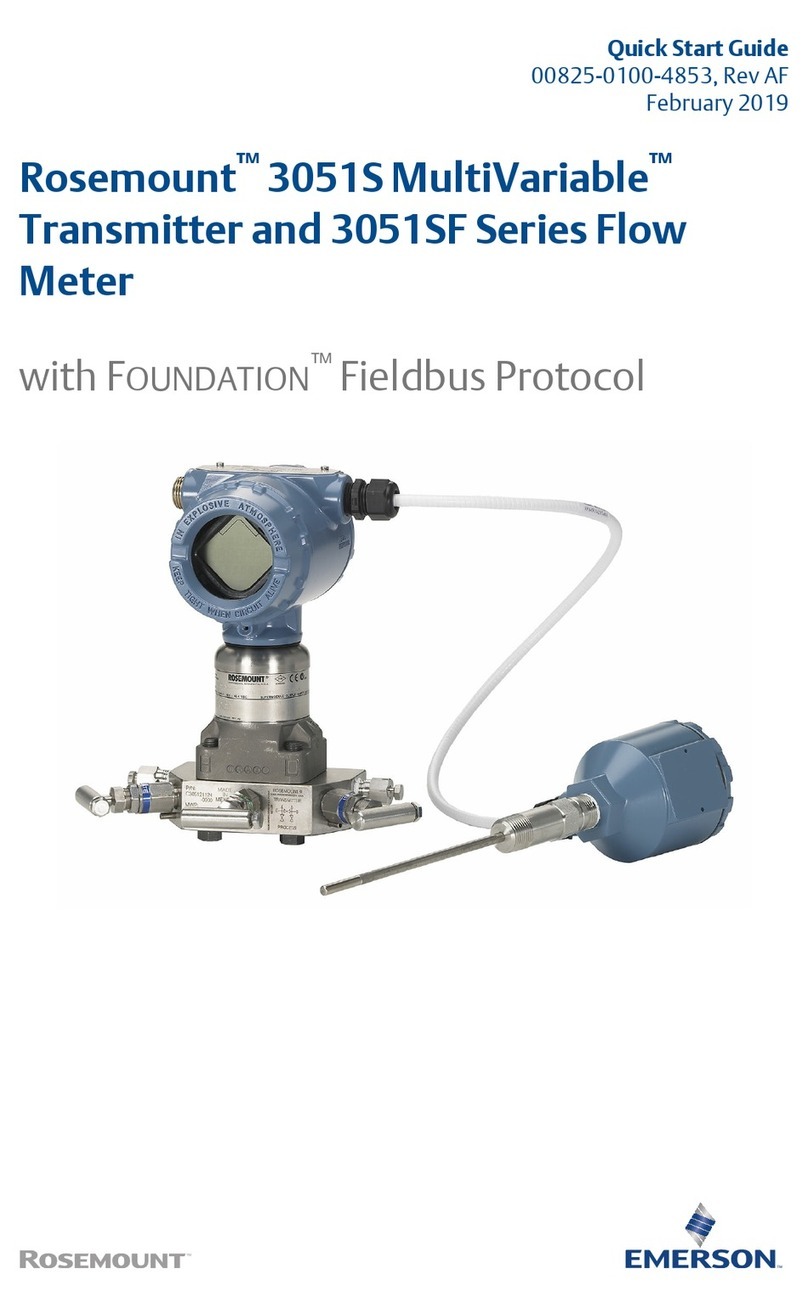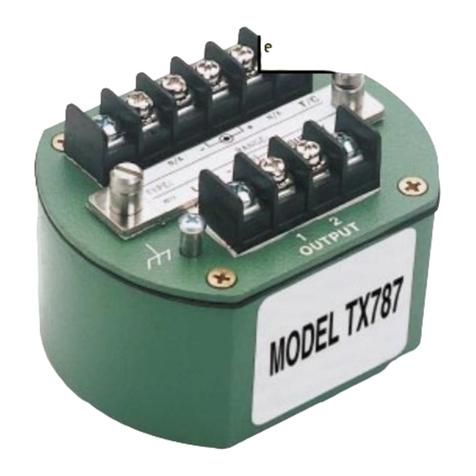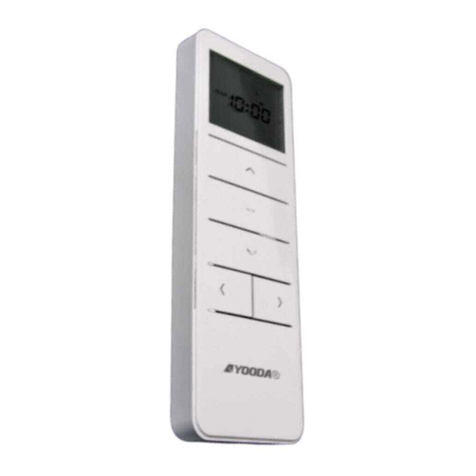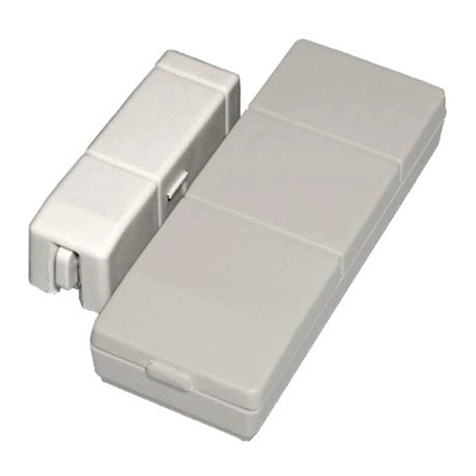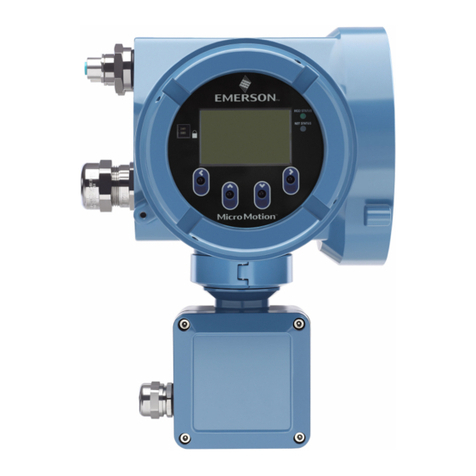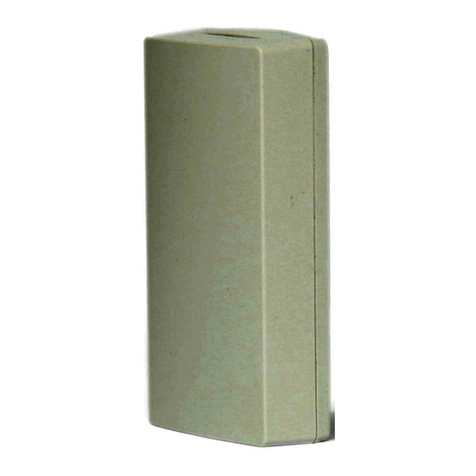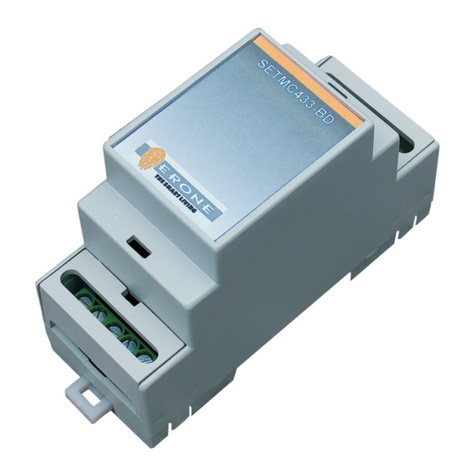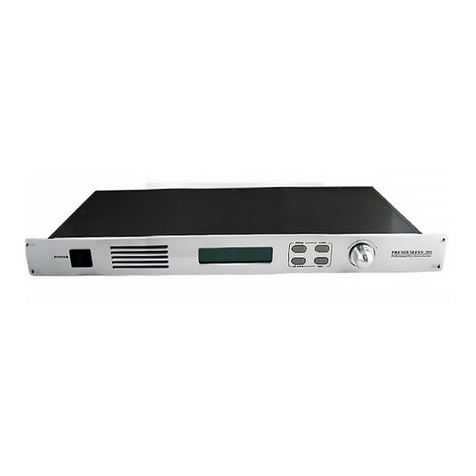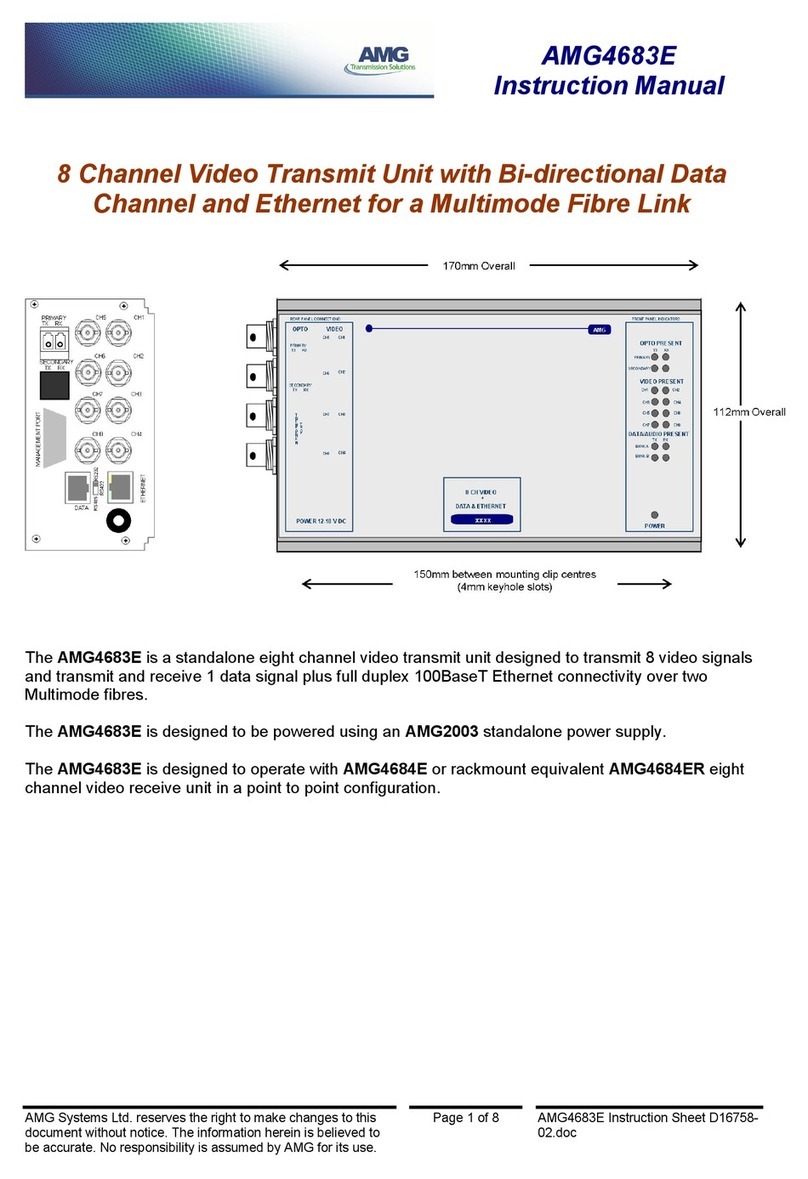Autrol APT 3000 Series User manual

Quick Start Guide
APT 3000 Series
© Autrol Corporation of America

02
03
This manual covers mainly the functional needs for powering and configuring 3100 A/D/G/H &
3200 A/G series transmitters, including the 3100 MP & 3100 L/ 3200 L sealed assemblies.
For full instructions on installation, configuration and other features/option sets available with these trans-
mitters please read the full product manuals available under the download tab of
www.autroltransmitters.com.
Additional instructional videos outlining programming and configuration functionalities can also be found
on www.autroltransmitters.com. First time users are encouraged to make use of these support resources
made available at no cost online.
For additional technical support or advanced troubleshooting please contact your nearest Autrol office or
call 1-847-779-5000.

04
05
Getting Started
Before installation check the model, specifications, and installation location for the transmitter. Install
using proper engineering practice.
Mount transmitter securely and stabilize any impulse piping.
Follow the published pressure and temperature limits for ordered transmitter and options.
For process temperatures ≥212°F, use of adequate impulse lines, capillaries (diaphragm seals), or
cooling elements are recommended.
Set Units, URL, and LRL (in menus 21, 22, and 23 respectively). See full menu tree at end of manual.
After installation of a 3100 D/H/G or 3200 G always perform a Zero Trim (menu 11 - note this is not the
same as Zeroing). Ensure applied process to transmitter is zero before attempting Zero Trim.
Do not perform Zero Trim for 3100 A/ 3200 A (absolute) unless a true zero PV can be applied to these
units. Instead a Zero Adjust (menu 12) is recommended.
Zero Adjust is also recommended for 3100/ 3200 L (tank level application) to compensate for tank noz-
zle offsets.

06
Functional Block/Sensor Part Diagram
APT 3100
07
APT 3200

08
APT 3100 Dimensional Drawing
09
APT 3100 Exploded View

10
APT 3100 MP Dimensional Drawing
11
APT 3100 MP Exploded View

12
APT 3200 Dimensional Drawing
13
APT 3200 Exploded View

14
LCD Screen
The 5 digit LCD screen shows:
Up to 5 digits of measured value
Error code
Units (Normal and Engineering)
Menu and Menu Option
Indication of being in Normal or Engineering mode
Indication of output being Linear or Square Root
Indication of performing a Loop Test
Indication of being in Multi-Drop mode
Mode/Output
Up to 5 Digit
Display
Unit/ Error
Menu
Menu Option
15
The 5 digit LCD screen shows:
Up to 5 digits of measured value
Error code
Units (Normal and Engineering)
Menu and Menu Option
Indication of being in Normal or Engineering mode
Indication of output being Linear or Square Root
Indication of performing a Loop Test
Indication of being in Multi-Drop mode
LCD Screen Rotation
Unscrewing the two screws on either side of the LCD
screen allows for the screen to be rotated 90° clock-
wise or counterclockwise.

16
LCD Screen Display Error Codes
17

18
Fail-Mode
AUTROL® Smart Pressure Transmitters automatically perform real time self-diagnostic routines and
display any error codes on the local LCD (M1 option if ordered) that can be used for troubleshooting.
In addition to this, the self-diagnostic routines are also designed to drive transmitter current output
outside of the normal saturation values in case a fault mode is detected. The transmitter will drive its
current 4-20mA output low (down) or high (up) based on the position of the failure mode alarm jumper
(or DIP switch) configured in line with NAMUR requirements.
19
*For Blind units using DIP
switch on MCU board .
Fail Mode Selecon Jumper
Switch on LCD Module

20
Power Supply Load Limitations
21
11.9-45 Volts DC is recommended for powering the transmitter. The external power supply ripple noise
should not be higher than 2%. When calculating loop resistance please include resistance of all devices
added in the loop. For intrinsic safety applications when using an Intrinsic Safety Barrier, please also in-
clude the resistance of the barrier into the max loop resistance calculations.
Max. Loop Resistance [Ω] = (E-11.9) [Vdc] / 0.022 [mA]
Note for Standard 4-20mA output units, operating at 11.9V is possible only with Zero load connected to
transmitter analog output. HART is not supported at this low of supply voltage input.
17.5V is recommended as minimum drop across the transmitter for both HART and 250 Ohm loop re-
sistance (loads).
24V +/- 30% is the typically recommended operating range for standard 4-20mA(HART) transmitters.
For 12V and lower please refer to our 3100/3200 LV (low voltage, 1-5V output units)

22
Connection Diagram
of Signal, Power and HTT for Standard Model Transmitters
1. HHT (HART Communicator) or PC Configurator may be connected at
any terminal point in the signal loop
2. HART Communication requires a loop resistance between 250 and
550 Ohm at 24 Vdc
3. Power Supply
Voltage Range: 12 to 45 Vdc
Voltage Rating: 24 Vdc ± 30%
23
Connection Diagram
For Low Voltage Transmitters
Minimum operating input of 9V (with no loading), recommended 12V (48V maximum).
DC Power
Input Power Supply Connection
and Hang Jack Connection
1-5V Output Connection

24
Input Power Supply
Pulse Output
Connection Diagram
For 3100F (Pulse Out/ Flow Transmitters)
25
Pulse Output Hook Up
Minimum operating 17.5V (with no loading), Recommended 24V minimum for pulse and 4-20mA 2-
wire loops.
Pulse Specification
Scaled Pulse: A single pulse is output for a
specified flow amount
Pulse Width: 10ms, 50ms, 100ms se-
lectable
Duty Cycle: 49 Pulse/Second maximum
Output Type: Open Collector, 30V, 500mA
maximum
Relay or Impulse
Counter
Terminal Block
Port “1”
Terminal Block
Port “2”
DC Power
Supply

26
Housing Rotation
Unscrewing the housing rotation screws in the front
and back of the transmitter allow the housing to be
rotated 90° counterclockwise.
360° rotation possible, however please take care that
the sensor cable (inside neck) is not pinched or dam-
aged during re-orientation.
27
Lock Front/Rear Covers
Allen Screw provided on each side of Front and Rear Cover allows for locking the
covers for tamper proofing.
Front
Rear

28
Grounding
Please provide for proper grounding (earth ground) at designated points (external or internal).
29
Please provide for proper grounding (earth ground) at designated points (external or internal).
Vent/Drain Plugs
Optional with F1 or F2 Code Standard with Bleed

30
Fully Functioning Push Buttons
To access the magnetic push buttons loosen one of the screws holding down the nameplate on the top of
the transmitter. Turn the nameplate out of the way; underneath are two push buttons labeled Zero and Span.
These magnetic push buttons are fully functioning (see menu tree in following pages).
31
To access the magnetic push buttons loosen one of the screws holding down the nameplate on the top of
the transmitter. Turn the nameplate out of the way; underneath are two push buttons labeled Zero and Span.
These magnetic push buttons are fully functioning (see menu tree in following pages).
Re-Ranging and Applying External PV
Press Zero (5 sec)
When display shows “–ZR–” re-
lease the button
Apply PV corresponding to de-
sired LRV (4mA) setting
Press Zero again. Display will
show –Z or –ZE if error occurs.
To adjust SPAN press SPAN button (5
sec)
When display shows “–SP–” re-
lease the button
Apply PV corresponding to de-
sired URV (20mA) setting
*IMPORTANT
It is highly recommended to use a PV source that is at
least +/- 0.005% accurate to avoid adding negative
bias to factory calibration. If accurate PV source is not
available please use push button menu 2.2 & 2.3 to re-
range accurately without need of applying an external
PV source.

32
Menu Functions of the push buttons are controlled by the firmware version of the transmitter.
Please check the specific firmware version listed on the neck tag of the transmitter (under
LCD screen), as this may limit the available features.
As new features are continuously added please check with the most current manual online
for any specific updates on new firmware's and functionality included.
All available menus are divided into 4 primary sections
1(TRIM) - for trims, loop test etc.
2(SETUP) - for user configuration (units, range settings, output, damping etc.)
3(LCD) - for display resolution, multi-parameter display, engineering mode
4(Device) - for reset, password lock, Hart Device ID, etc.
Local Push Button Menu (Ver7.x and Higher)
33
Menu Tree for Version 6.x and Lower
Local Push Button Menu (Ver7.x and Higher)

34
Fully Functioning Push Buttons
*Continued on next page
*
35
Fully Functioning Push Buttons
Version 7.x and Higher

36
*Continued on next page *
37
Version 7.x and Higher

38
*Continued on next page
*
39
Version 7.x and Higher
This manual suits for next models
9
Table of contents
Other Autrol Transmitter manuals
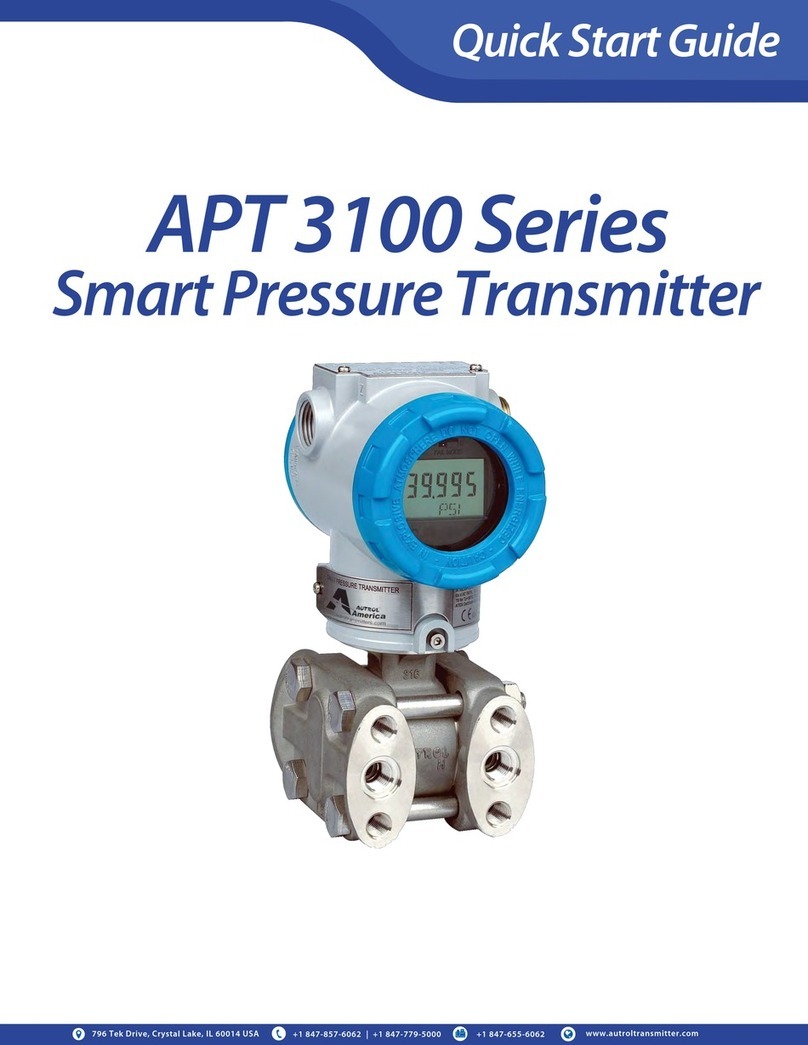
Autrol
Autrol APT 3100 Series User manual
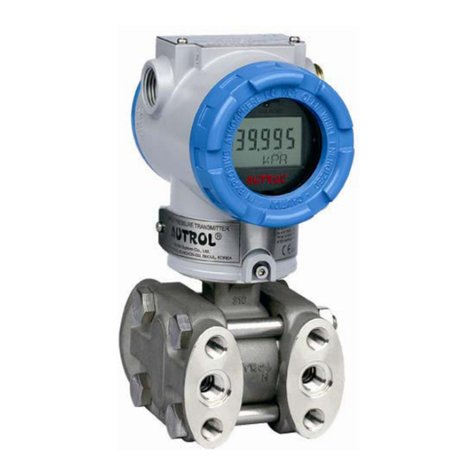
Autrol
Autrol APT 3100 Series User manual
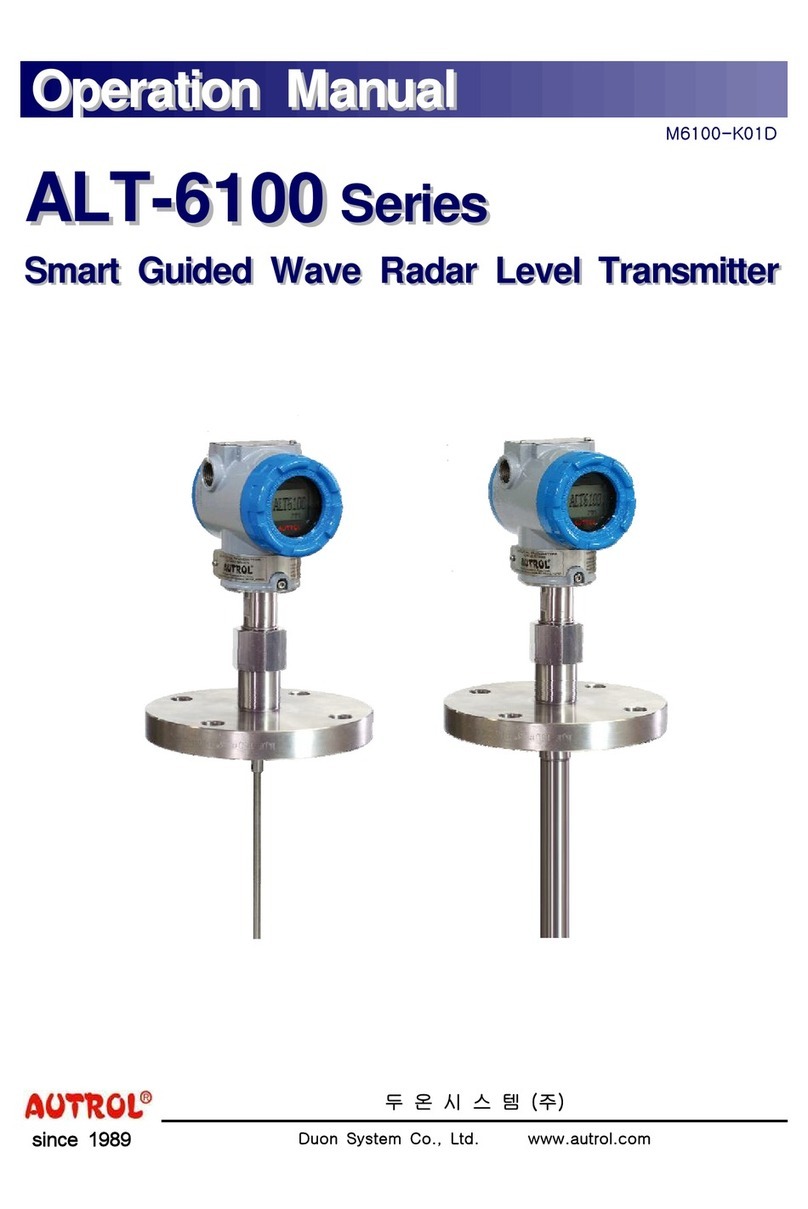
Autrol
Autrol ALT-6100 Series User manual
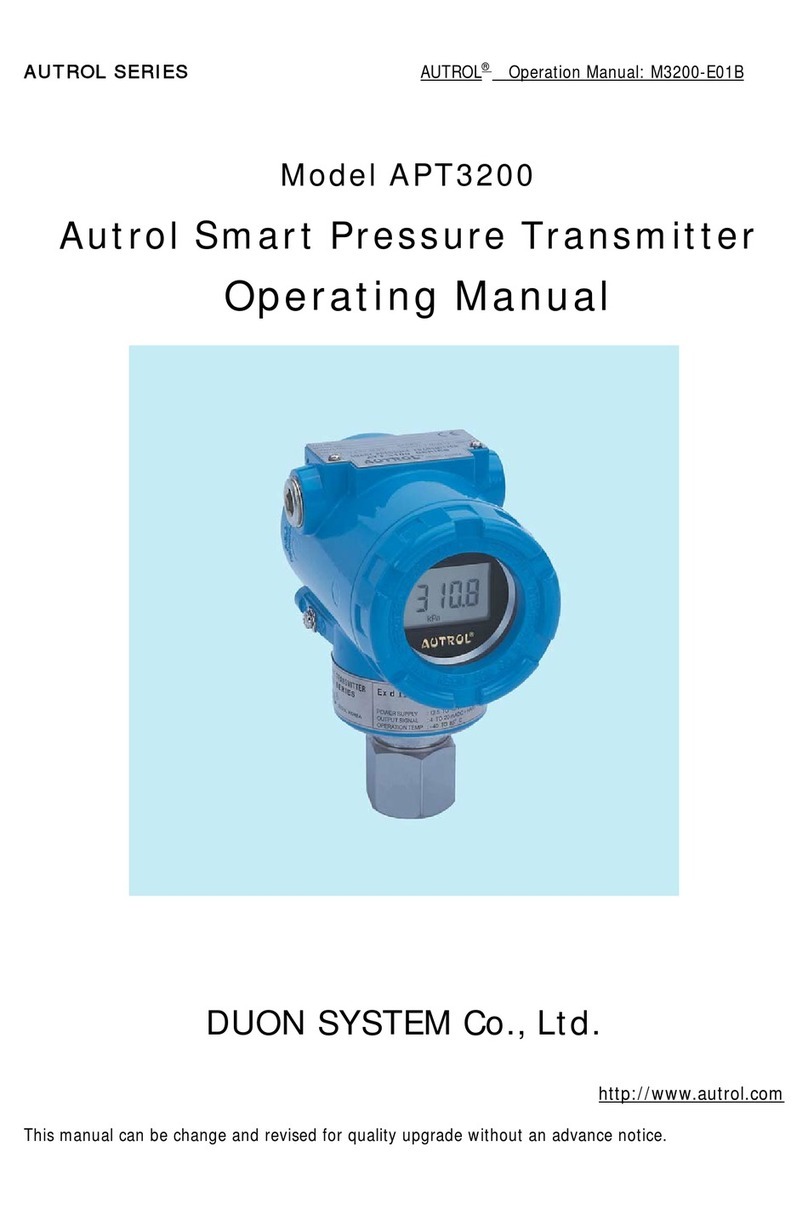
Autrol
Autrol APT3200 Series User manual
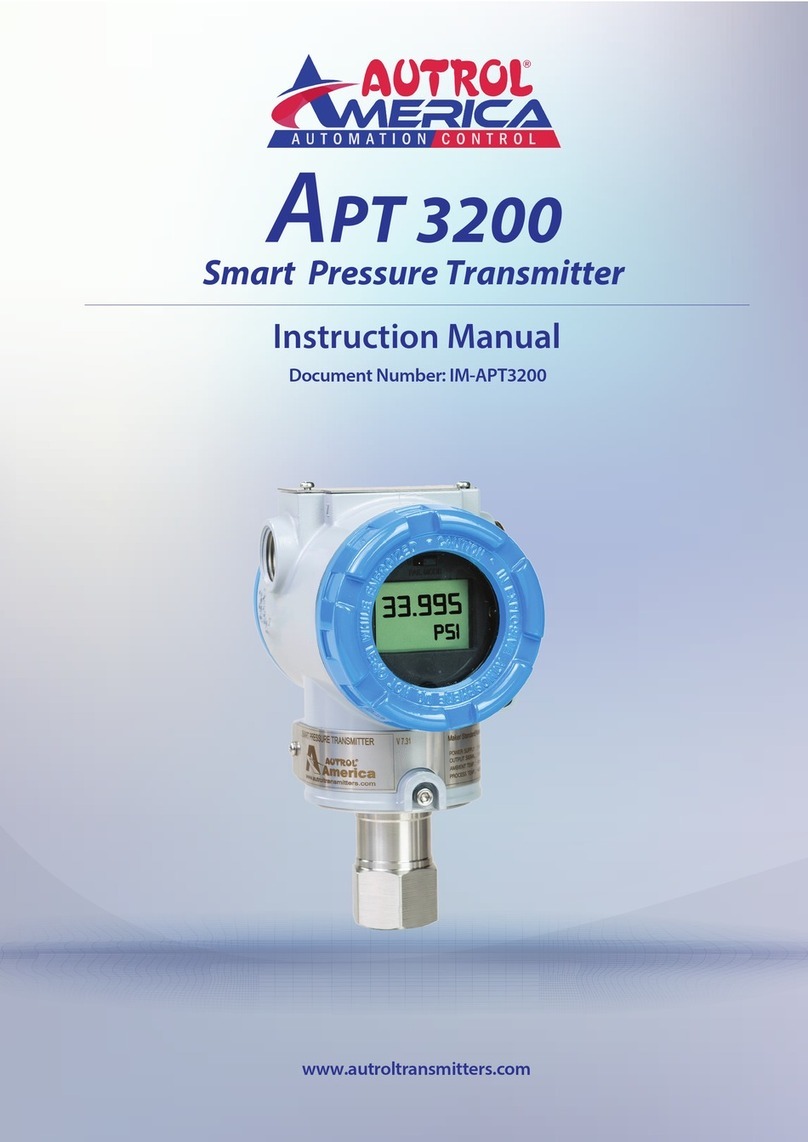
Autrol
Autrol APT3200 Series User manual
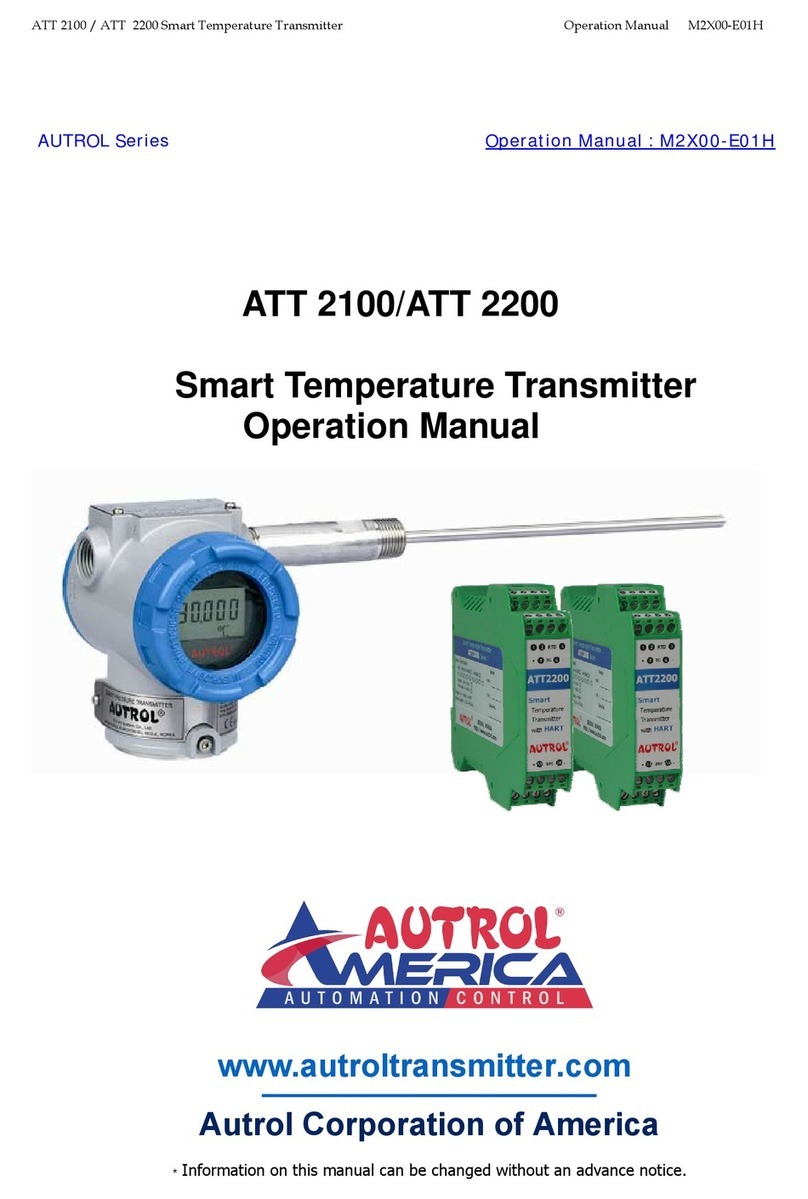
Autrol
Autrol ATT2100 User manual

Autrol
Autrol ATT Series User manual
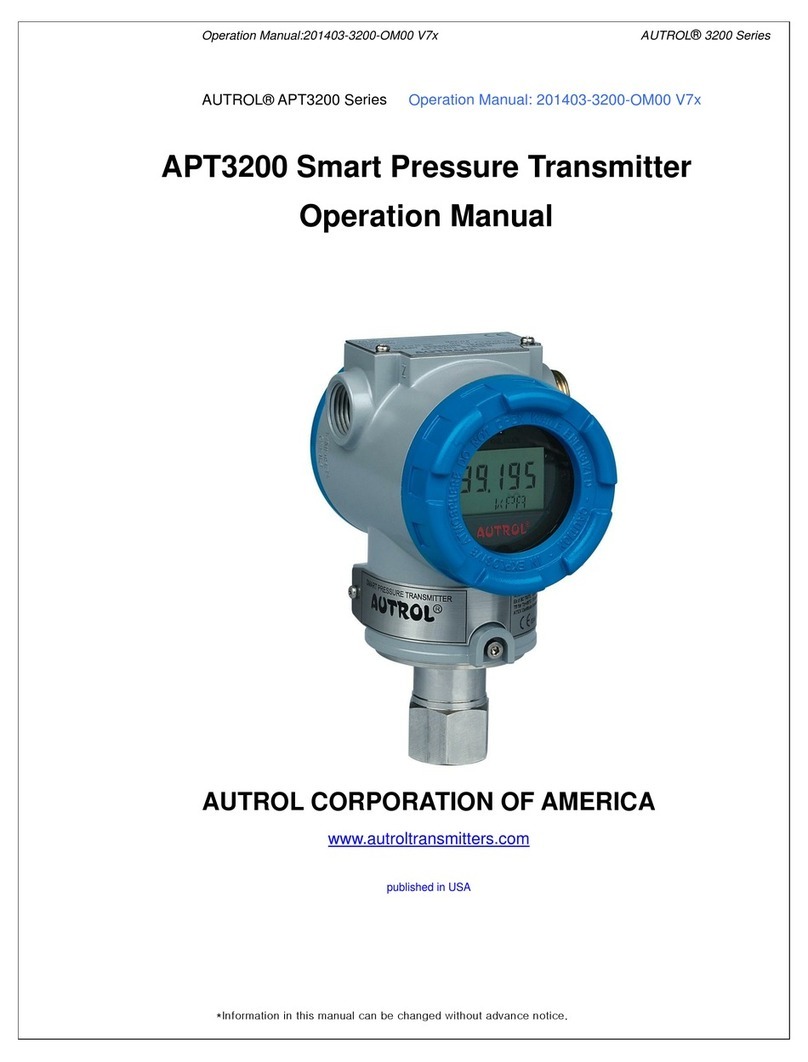
Autrol
Autrol APT3200 Series User manual
